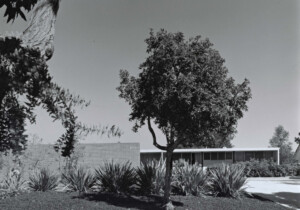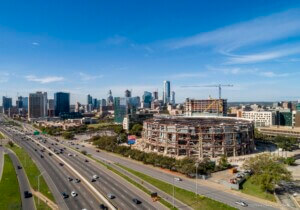Following a years-long legal showdown between the state government and a globe-spanning group of activists, demolition work kicked off this week at Y-Block, a disused 1960s-era office building in Oslo with two rare Pablo Picasso murals sandblasted directly onto its concrete walls. Last-ditch efforts to preserve the murals and the Brutalist building as one—including an impassioned letter sent to Norwegian prime minister, Erna Solberg by MoMA’s Martino Stierli, chief curator of architecture and design, and Ann Temkin, chief curator of painting and sculpture—have failed as officials remain unswayed.
The demolition, which first involves the removal of the murals, has been met with a fresh round of protests. As reported by Agence-France Presse, the murals, one weighing 250 metric tons and the other 60 metric tons, were “enclosed in massive metal supports to be transported away and stored nearby” this past Monday, per public agency Statsbygg. Their removal is slated to be complete by the end of this week.
“It is slow, and the whole move will take a long time,” Paal Weiby of Statsbygg explained to Norwegian news agency NTB. “Hopefully everything goes as planned.”
The demolition of Y-Block and the removal and relocation of the mural is estimated to cost $6.4 million.
Government officials announced plans to officially move ahead with the razing of the Erling Viksjø–designed bureaucratic office block back in March with the intention to extract the pair of murals and incorporate them into a still-fuzzy-on-details redevelopment scheme. A monumental mural dubbed The Fisherman is prominently located on the building’s exterior and a smaller one, The Seagull, can be found within the lobby. While the murals themselves are Picasso designs, they were the first large-scale murals created during a long and fruitful period of collaboration between the Spanish-born artist and Norwegian sculptor Carl Nesjar, who was the one to execute the murals at Y-Block.
Y-Block, located in the heart of Oslo’s Regjeringskvartalet administrative district, was the site of a deadly July 22, 2011 car bombing that commenced what’s considered as the darkest day—“7/22”—in modern Norwegian history. The murals were not damaged during the blast, which was ignited by domestic terrorist Anders Behring Breivik, and the building itself only suffered light cosmetic damage. To this day, it remains structurally sound. Yet, the building— deemed a “monument of European importance” by British preservation group Twentieth Century Society (C20)—has sat unoccupied since the bombing. Shuttered by the government due to security concerns over a network of tunnels beneath it, Y-Block officially garnered endangered status roughly two years after the attack when officials first floated the idea of a sweeping reconstruction effort at Regjeringskvartalet that would involve the demolition of the building. That controversy-sparking idea tuned into an actionable plan a year later.
At the time of the attack, Y-Block and its neighboring H-Block building, home to three additional small Picasso/Nesjar murals, were just months out from being named heritage national monuments. (There are no plans to demolish H-Block.)
Today,
what will be? pic.twitter.com/wBG4l4KAnx— yblokka (@yblokka) July 28, 2020
Murals aside, the court-challenged plans to demolish Y-Block have divided Norwegians. Some view the 51-year-old building as a painful—and, in some cases, aesthetically unsightly—reminder of an act of unvarnished evil that should be razed to make way for new modern development. Others believe that demolishing it would only fulfill what Breivik sought to achieve.
“Breivik wanted to attack social democracy,” Mari Hvattum, a professor of architectural history and theory at the Oslo School of Architecture and Design, told the New York Times in 2017. “He wanted to get rid of the legacy of social democracy in built form, and in living form, in terms of people. To tear this down is to complete his mission.”
While government officials have committed to relocating the murals, preservationists view the works as being inseparable from the building that they adorn and that detaching them would wholly erase the power of the art itself. The murals and the building, in their eyes, are one and should remain that way.
“It’s a violation of the works that are integrated into the building architecture in an inseparable way,” Kjerst Hembre, architect and co-founder of Save the Y-Block campaign told AFP earlier this week. Hembre noted that the government officials have shown a “lack of understanding” by putting little thought into how exactly the murals will be incorporated into the new governmental district.











